Presenting our PDP and Gauging Peer Feedback
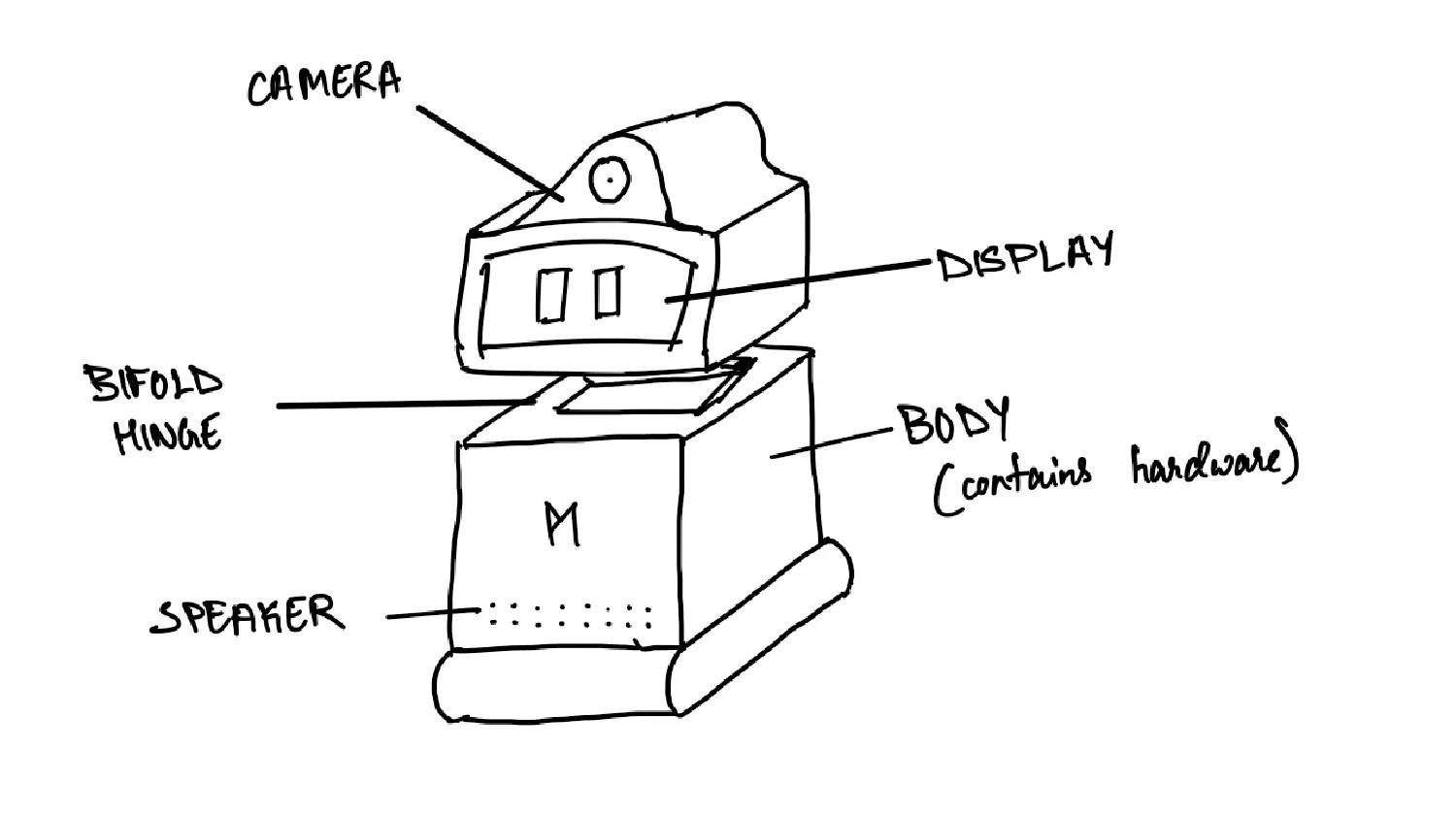
Initial design concepts and peer feedback
Posted 2023-10-30 | Previous Post: Evaluating Expert Feedback and Market Solutions | Next Post: Next Steps in Designing our Proof of Concept
The team evaluated existing products on the market, and other innovative designs from other product categories to gain insight into what prospective users might find intruisive and could easily be integrated in their daily routines.
Three primary design concepts came to the forefront, the first being a small camera-based robot placed on a desk:

This design would require AI video processing to monitor a user sitting at their desk, and inform them with a changing display on when they need to correct or change their posture. At this stage the team was looking to understand that positive aspects, and negative aspects of each design, so a wide variation in concepts was desired.
The second design took a hybrid approach, seperating the “sensor” and the “feedback” aspect of the product, with a pad placed on a chair craeting a 3D point map with the back of a user, while a smaller display placed on the desk would recieve and process the incomming sensor data, presenting the user with feedback on whether they need to correct or change their posture
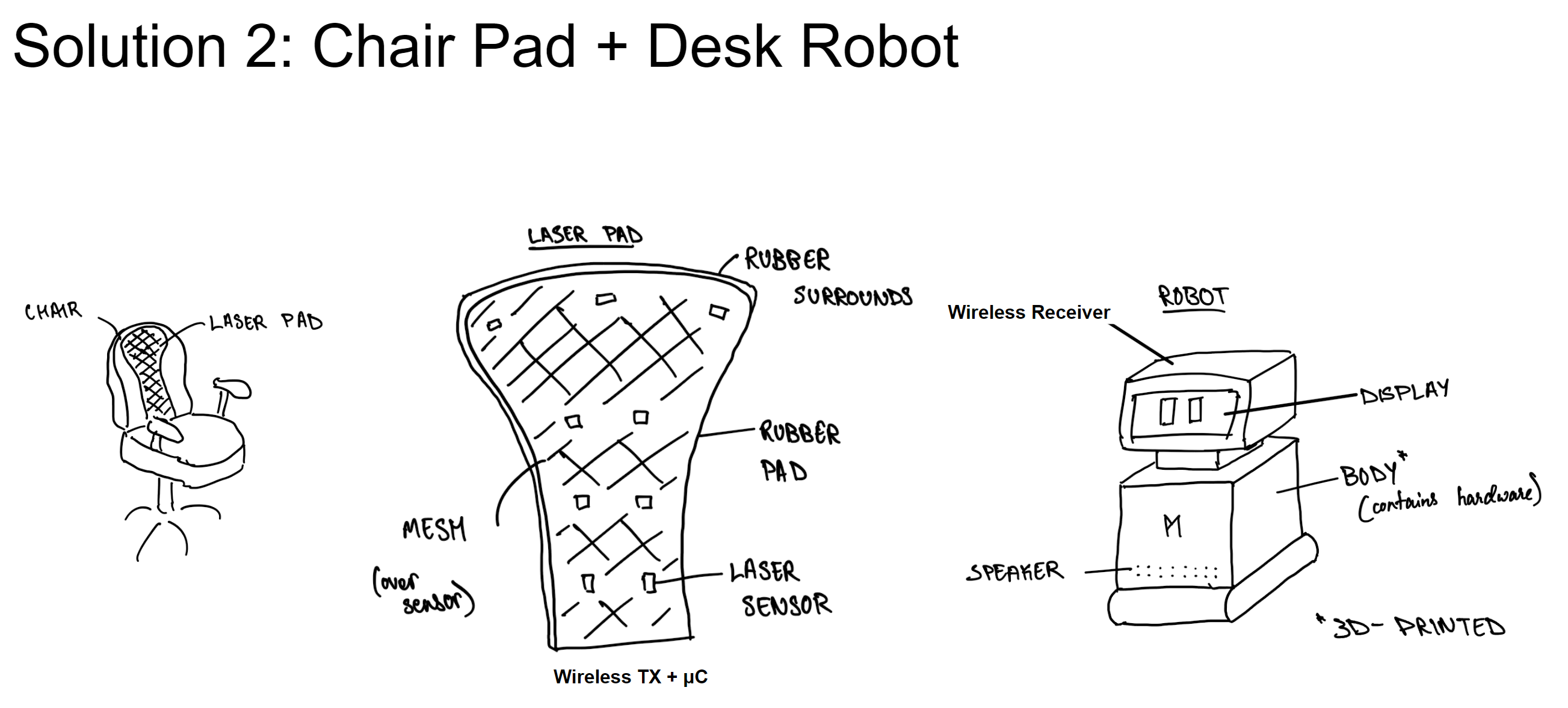
With both designs, the team had to consider whether or not the chosen “sensor” could accurately determine the posture of a user, and if obstacles / obstructions such as poor lighting or user clothing could negatively affect the data gathering process.
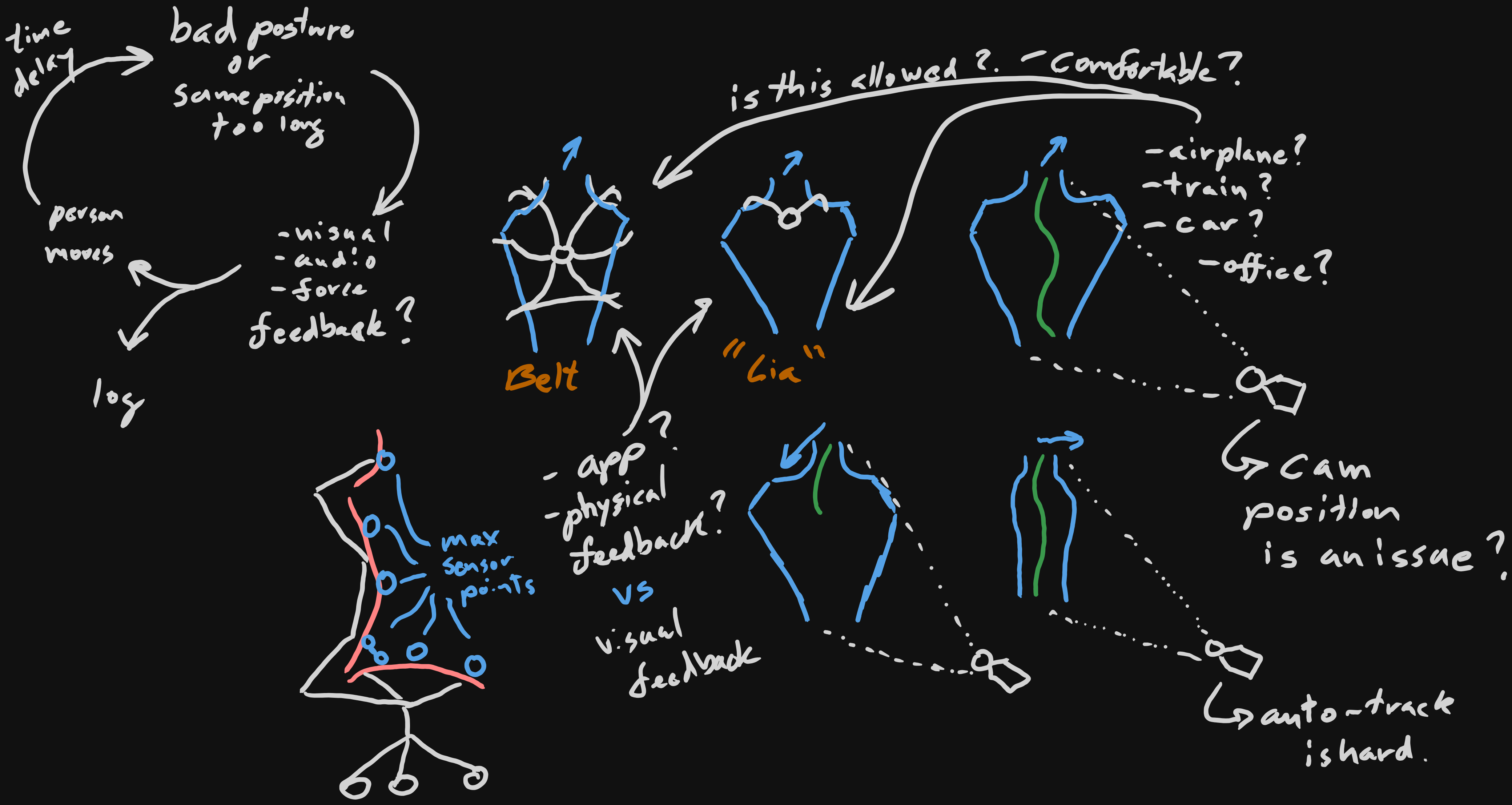
For a third concept, a two part on-body sensor vest was considered, where the “sensor” and “feedback” would be on the device. This presented a possibilty for more accurate data collection and does not limit the product to only functioning while at a desk or sitting, at the cost of being much more intrusive compared to other solutions. It would use multiple gyroscopic and accelerometer sensors to create an estimation of key postions long the back of a user.
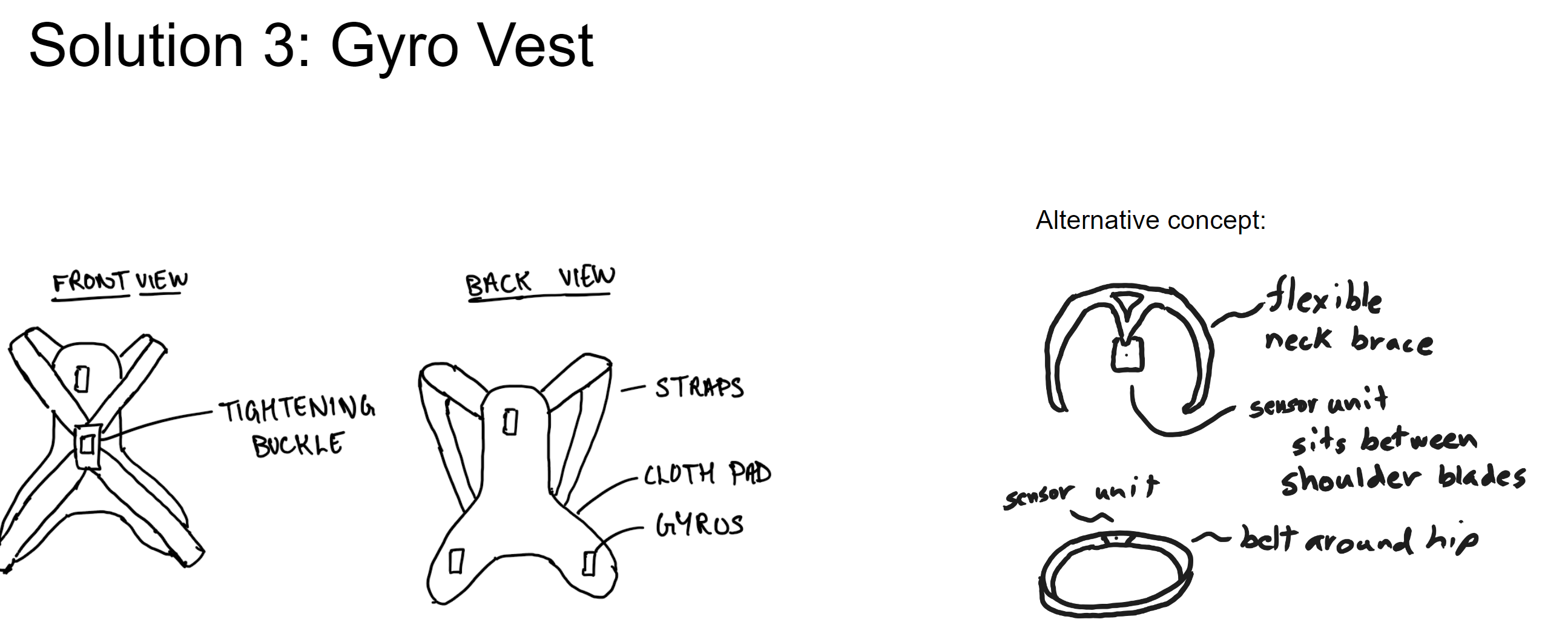
Similar products on the market, suggested that the third concept might have issues with tracking accuracy and might discourage users from using it due to how instrusive it is to put on and use. The second concept could possibly create more accurate data for spine position, but would introduce issues with having to charge or power the chair pad. Many similar points were discussed between the team, and a design selection matrix demonstrates well the various aspects considered, as we moved to select a single design.
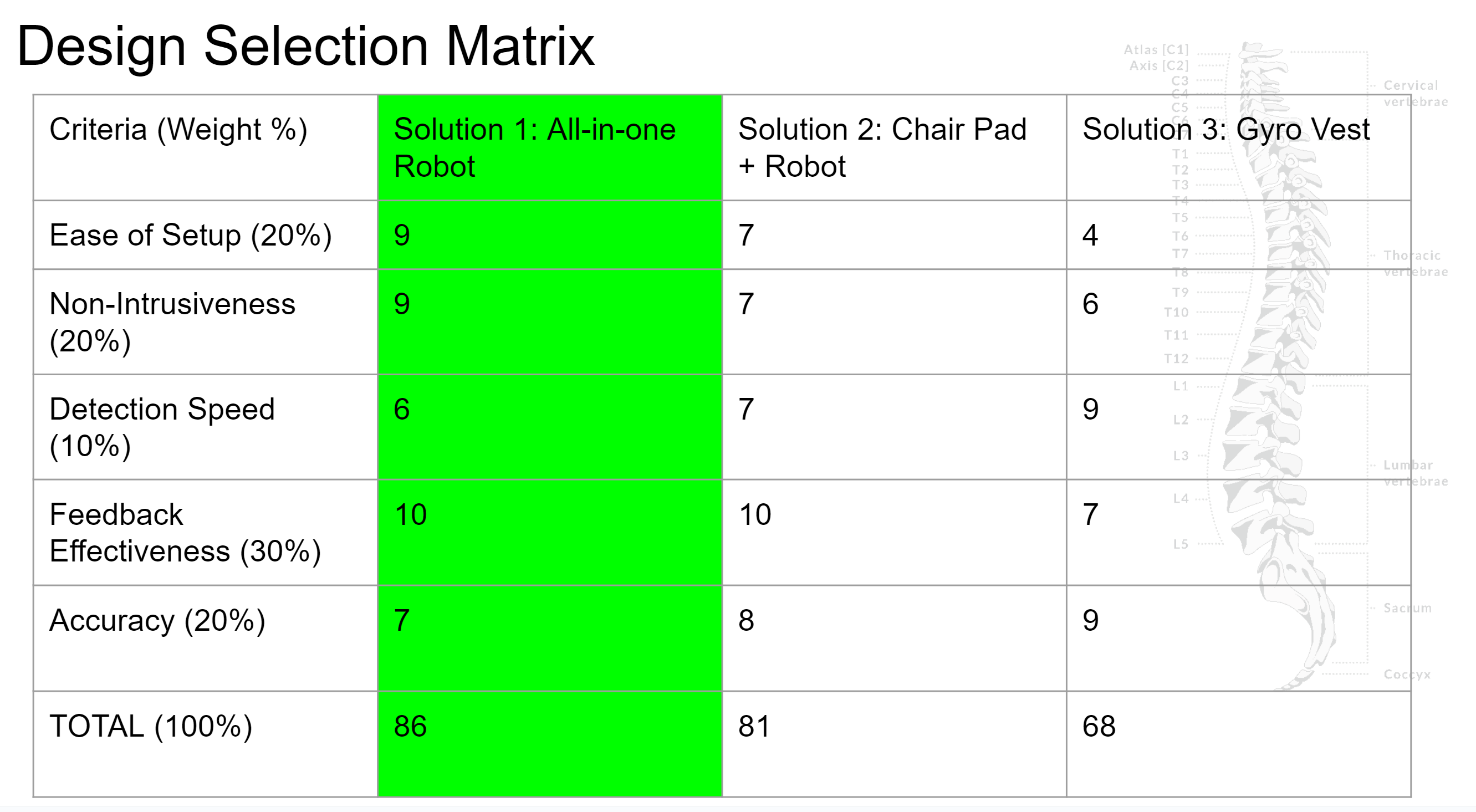
As such, the first concept was chosen for further evaluation and prototyping. Many aspects of teh design would need to be evaluated, and changes made even before the first component is purchased.
After presenting our progress to our peers, we recieved generally positive feedback regarding the PostureMax vision and our progress. Some were honest with their feedback that they weren’t convinced of the importance of the selected problem, and this is understandable considering internally within the team it was a gradual process towards building an understanding of the core issue. It is hard to convince someone that doesn’t have back pain now, that it is worth being careful how our actions today can result in back pain in the future. Unlike exercise or brushing our teeth, most people are accustomed to not building daily routines that encourage good posture health. In work environments where accute back injuries are common, many protocols and tools are used to keep workers from injuring and developing back issues, but this is not often the case for workers that spend a prolonged time sitting.
Re-evaluating our verbal messaging, but also the “design language” of our product will be essential in bridging the gap with a majority of users that might not intuitively understand the value of maintaining good posture health.
